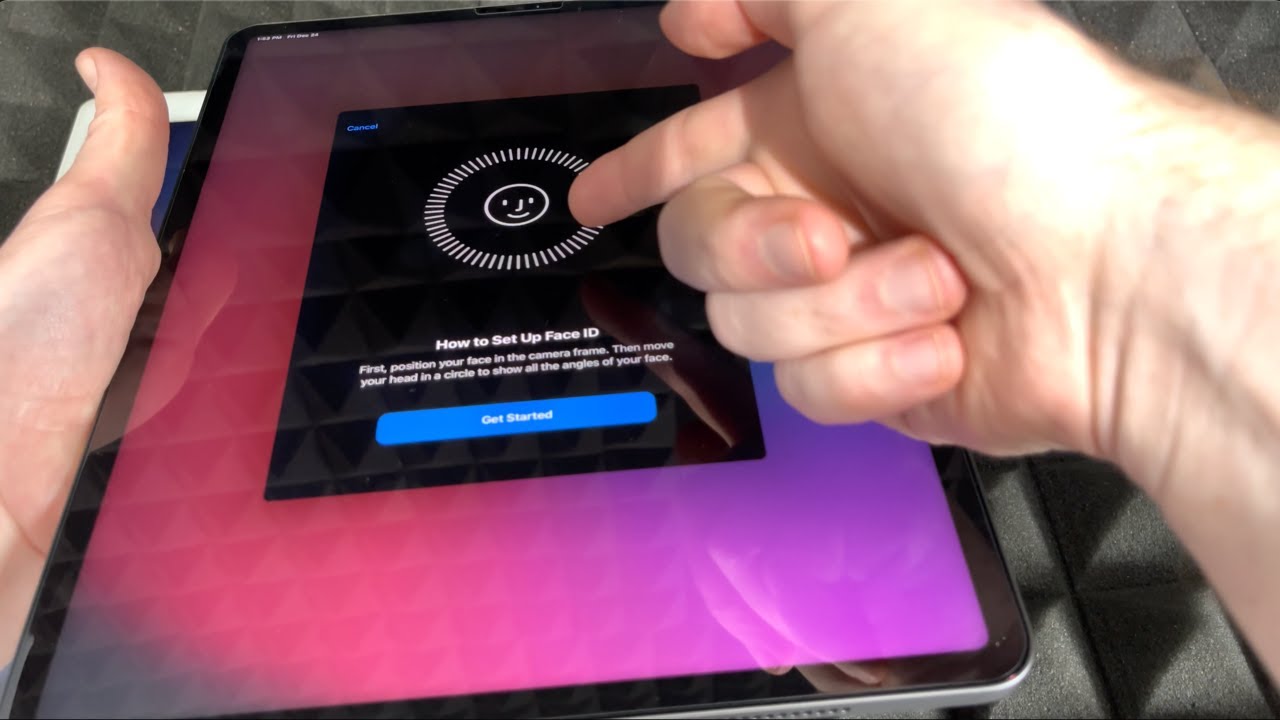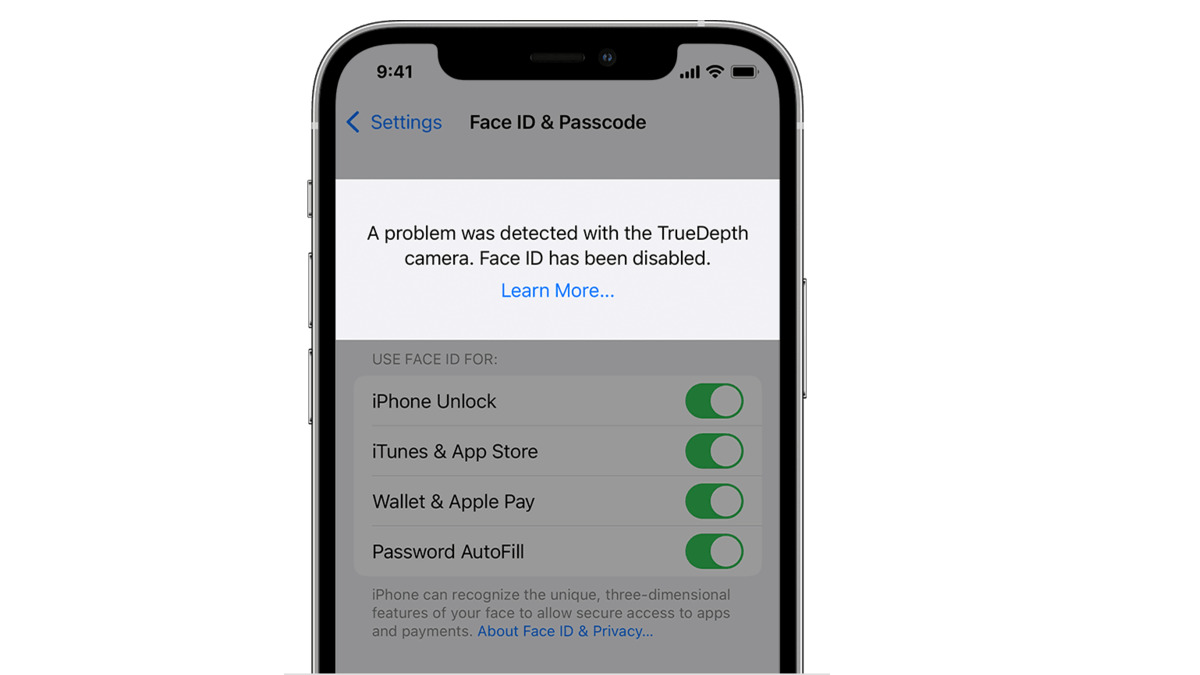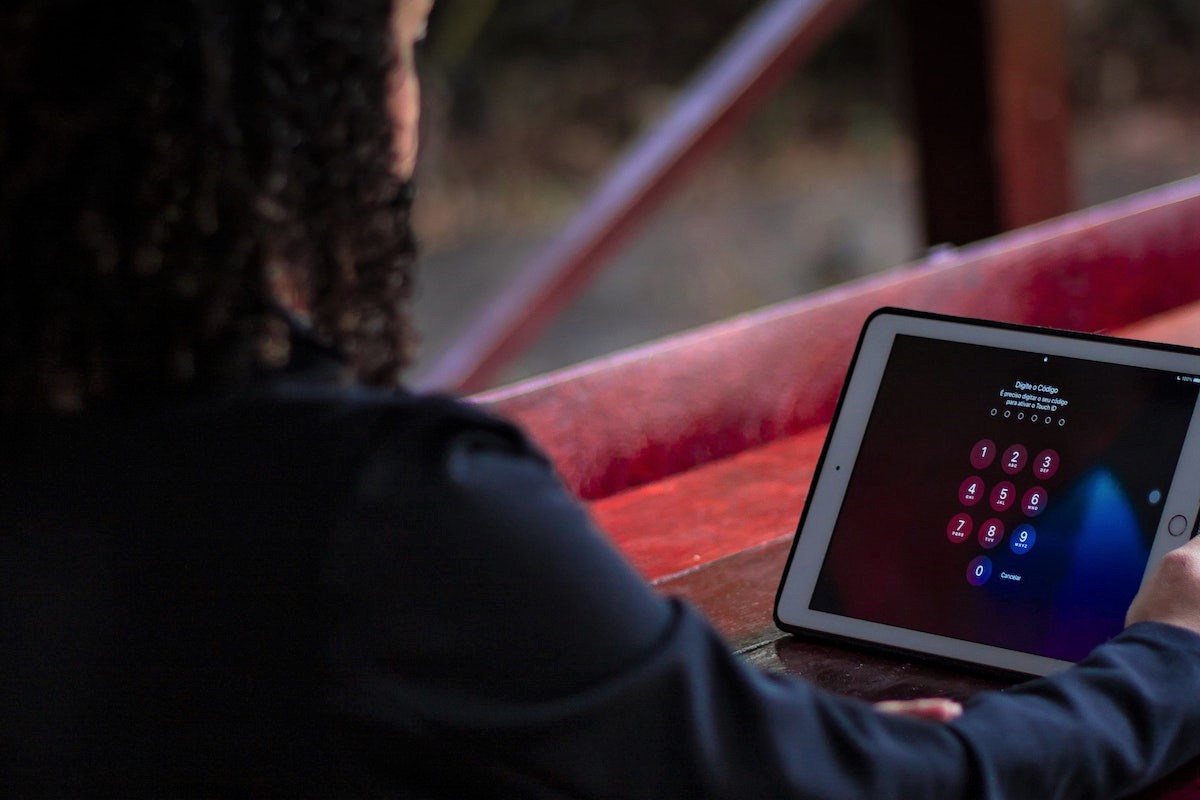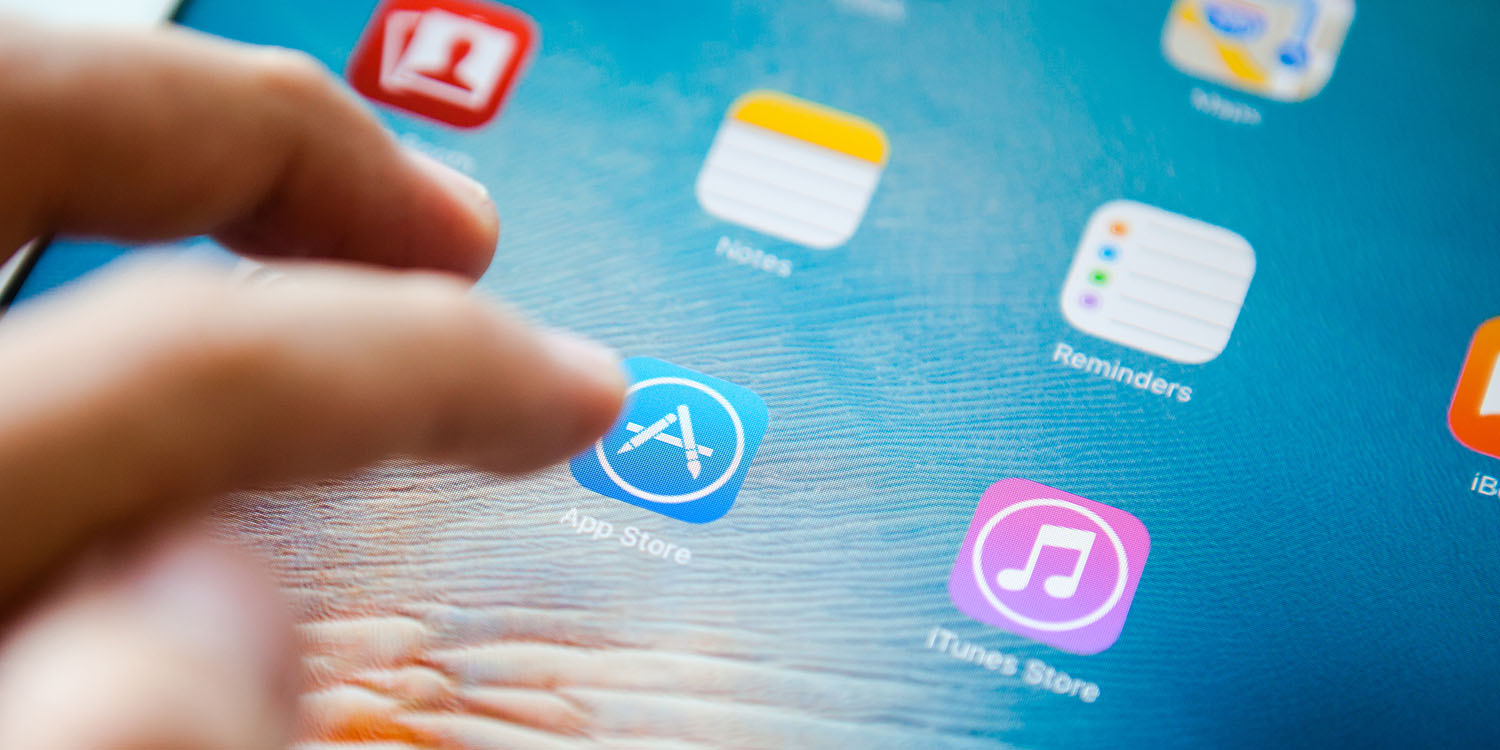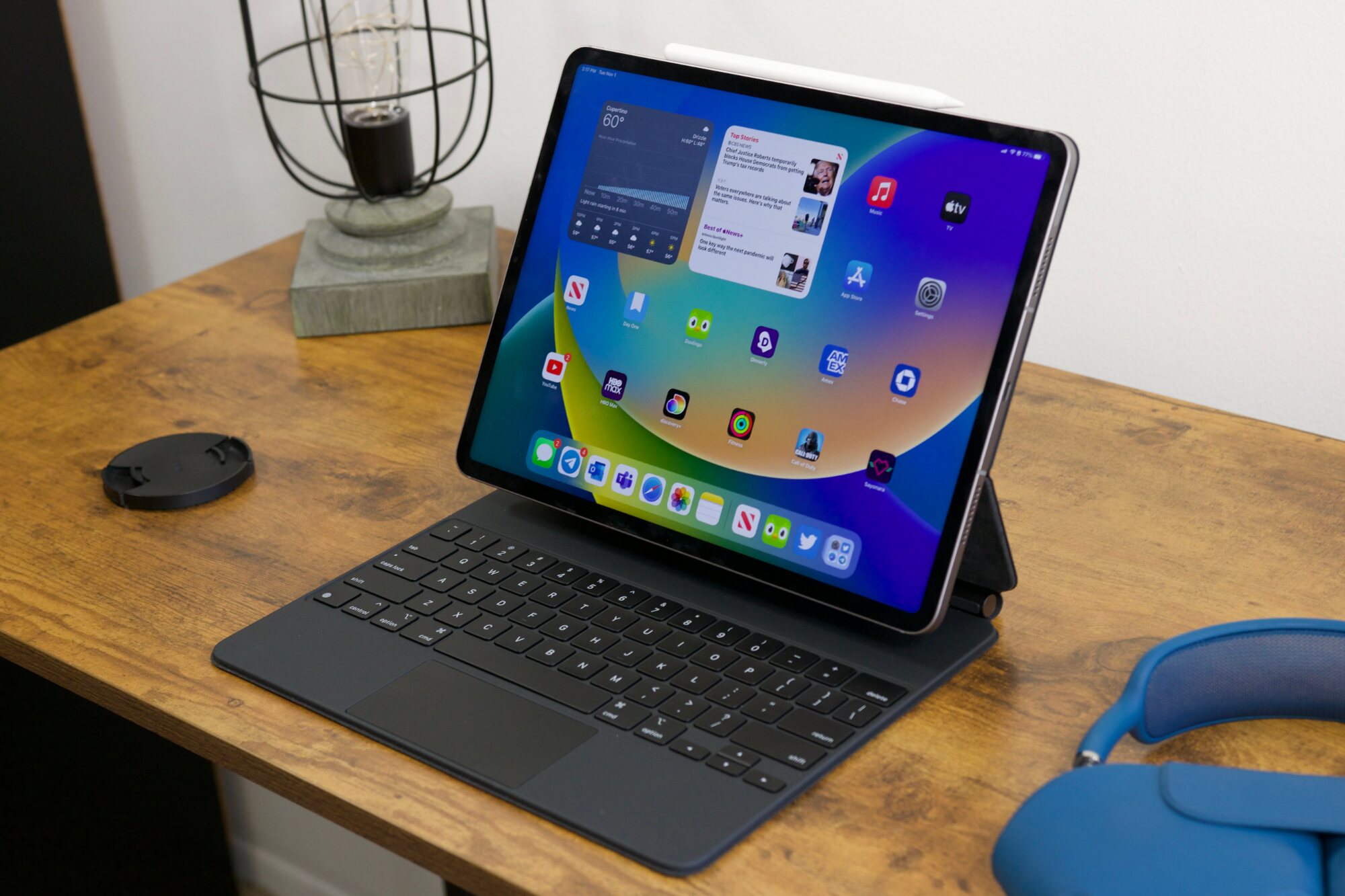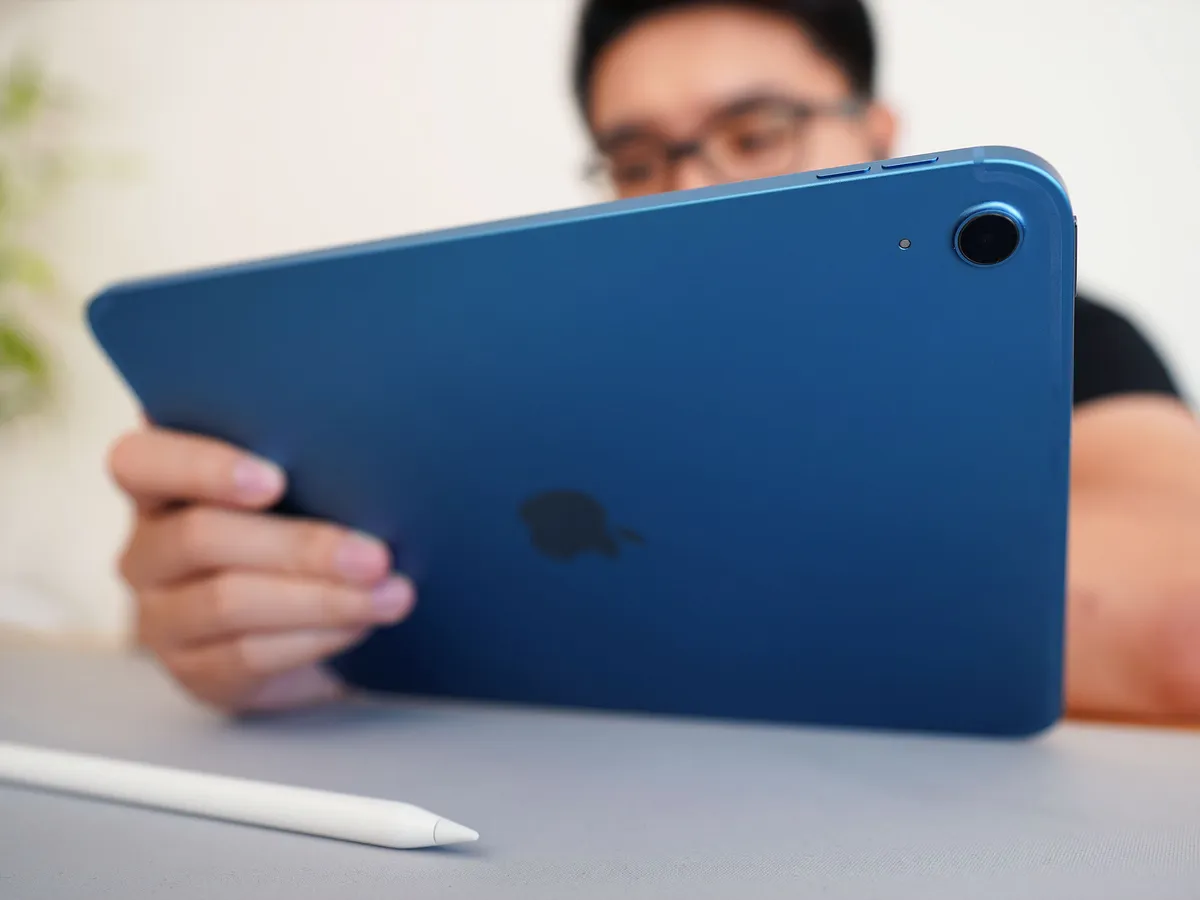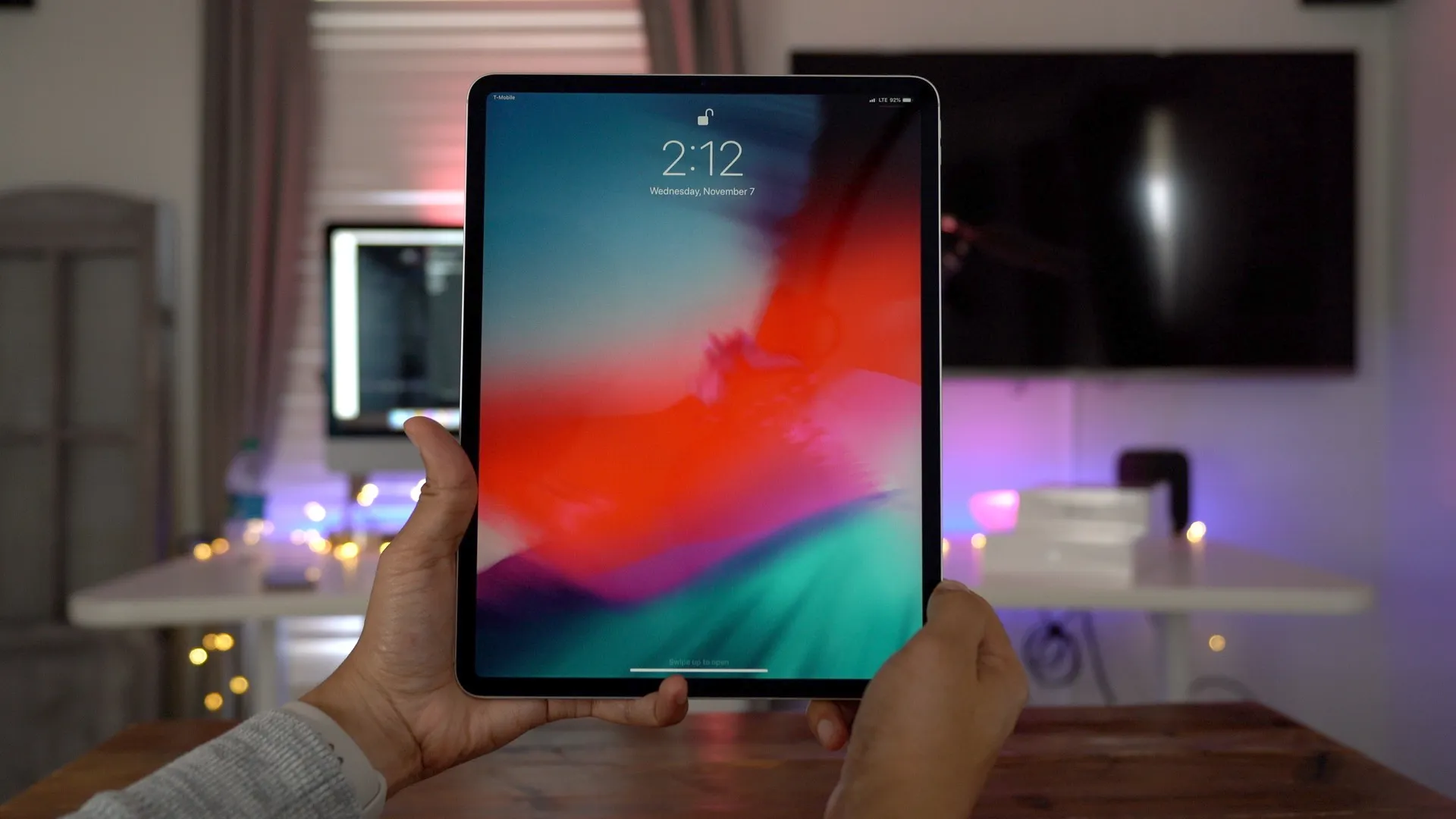Why Use Face ID on iPad?
Face ID on iPad is a revolutionary feature that brings secure and effortless authentication to your device. It utilizes advanced facial recognition technology to unlock your iPad, authorize app purchases, and securely access sensitive information. With Face ID, you can bid farewell to passcodes, PINs, and fingerprints, as this cutting-edge technology simplifies your daily interactions with your iPad.
The primary advantage of using Face ID on an iPad is convenience. Unlike traditional methods of authentication, such as entering a passcode or using a fingerprint scanner, Face ID instantly recognizes your face when you glance at the device. This means no more fumbling for passwords or swiping fingers on a sensor – just a quick glance, and your iPad is unlocked.
Face ID is not only convenient but also highly secure. Apple’s Face ID technology employs an array of sensors and an infrared camera to create a detailed 3D map of your face, making it incredibly difficult for impostors or unauthorized users to bypass the authentication process. Your face becomes your unique identifier, ensuring that only you can access your iPad’s contents.
Another compelling reason to use Face ID is its seamless integration with various applications and services. With Face ID enabled, you can authorize app downloads and purchases on the App Store using just your face, eliminating the need to input your Apple ID password every time. Additionally, many banking and financial apps have implemented Face ID support, allowing you to securely access your accounts and perform transactions with a simple facial scan.
Moreover, Face ID offers increased privacy protection. Traditional authentication methods often leave traces, such as smudges on fingerprint sensors or the predictable patterns of passcodes. In contrast, Face ID leaves no physical evidence behind, ensuring that your personal information remains safe and confidential.
Lastly, Face ID works in various lighting conditions, thanks to its infrared technology. Whether you’re in a brightly lit room or in dimly lit surroundings, Face ID adapts to capture your facial features accurately. This makes it incredibly reliable, regardless of the environment you’re in.
In summary, Face ID on iPad provides unmatched convenience, enhanced security, seamless integration with apps and services, increased privacy protection, and adaptability to different lighting conditions. By utilizing this cutting-edge feature, you can unlock a whole new level of efficiency and peace of mind while using your iPad.
Compatible iPad Models
Face ID on iPad is a remarkable feature that brings advanced facial recognition technology to compatible iPad models. It offers a seamless and secure way to unlock your device, authorize app purchases, and protect your sensitive information. While not every iPad supports Face ID, several models have this revolutionary feature built-in.
The following iPad models are compatible with Face ID:
- iPad Pro (3rd generation) – released in 2018
- iPad Pro (4th generation) – released in 2020
- iPad Pro (5th generation) – released in 2021
These iPad Pro models feature an innovative TrueDepth camera system, which includes the necessary sensors and technologies to enable Face ID functionality. The TrueDepth camera, located in the top bezel, captures precise depth information and analyses facial features to create a secure map of your face.
It’s important to note that Face ID is not available on other iPad models, such as the iPad Air, iPad mini, or iPad (8th generation). These devices still rely on Touch ID or passcode authentication for unlocking and securing your iPad.
To determine if your iPad model supports Face ID, you can check the specifications on Apple’s official website or refer to the product documentation that came with your iPad. It’s always recommended to verify the compatibility before expecting Face ID functionality.
While Face ID is limited to specific iPad models, it represents a significant leap forward in biometric authentication technology. If you own one of the compatible iPad Pro models, you can enjoy the convenience and security that Face ID offers, enhancing your overall iPad experience.
Checking Software Updates
Regularly updating your iPad’s software is crucial to ensure the smooth functioning of Face ID and other features. Apple frequently releases software updates that not only bring new features but also address security vulnerabilities and improve overall performance. To ensure you’re running the latest software version on your iPad, follow these simple steps:
- Connect to Wi-Fi: Ensure that your iPad is connected to a Wi-Fi network to download and install software updates. Updating via Wi-Fi ensures a faster and more stable connection.
- Go to Settings: From your iPad’s home screen, tap on the Settings app. It’s represented by a gear icon.
- Select General: In the Settings menu, scroll down and tap on General. It should be located towards the top of the list.
- Tap Software Update: Under the General settings, you’ll find the Software Update option. Tap on it to proceed.
- Check for Updates: Your iPad will now check for available software updates. If an update is available, you’ll see a prompt indicating the availability of the update.
- Download and Install: If an update is available, tap on the “Download and Install” button. Make sure your iPad has enough battery power or is connected to a charger during the update process.
- Follow the on-screen instructions: Once the update is downloaded, follow the on-screen instructions to install it. Your iPad will restart during the installation process.
It’s important to note that updating your iPad’s software may take some time, depending on the size of the update and your network speed. It’s recommended to perform the update when you have adequate time and a stable internet connection to avoid any interruptions.
By keeping your iPad’s software up to date, you ensure that Face ID functions optimally and benefits from any improvements or bug fixes provided by Apple. Furthermore, staying up to date with software updates helps protect your iPad from potential security vulnerabilities.
Remember to regularly check for software updates and install them when available. This proactive approach will help you make the most of your iPad and enjoy the latest enhancements and security features that Apple provides.
Setting up Face ID on iPad
Setting up Face ID on your iPad is a straightforward process that ensures only your face can unlock and authenticate your device. Follow the steps below to get started:
- Open Settings: From your iPad’s home screen, locate the Settings app and tap on it. The app is represented by a gear icon.
- Select Face ID & Passcode: Within the Settings menu, scroll down and tap on Face ID & Passcode. You may need to enter your passcode to proceed.
- Set Up Face ID: Under the Face ID & Passcode settings, tap on the “Set Up Face ID” option.
- Position Your Face: Follow the on-screen instructions and position your face within the frame provided. Make sure to align your face properly and keep it within the guidelines.
- Move Your Head: As you position your face, move your head in a circular motion to allow the TrueDepth camera to capture your facial features from different angles. This helps improve the accuracy of Face ID.
- Complete the First Scan: Once your face is properly positioned, the camera will scan your face. Make sure to keep your eyes open and look directly at the camera during the scan.
- Complete the Second Scan: After the first scan is complete, the camera will prompt you to repeat the process. This ensures the system captures a comprehensive facial map by analyzing different aspects of your face.
- Face ID Set Up Complete: Once the second scan is finished, Face ID setup is complete. You can now use Face ID to unlock your iPad and authorize various actions.
It’s crucial to remember that during Face ID setup, your device will ask you to create a passcode as a backup authentication method. This passcode becomes essential in cases where your face recognition may not work, such as when wearing a mask or in certain lighting conditions.
While setting up Face ID, it’s recommended to position your face naturally, without obstructions like sunglasses, hats, or scarves. Also, ensure the environment is well-lit to achieve accurate facial detection.
By following these steps, you can conveniently set up Face ID on your iPad and take advantage of the enhanced security and effortless authentication it offers. Remember, Face ID technology continuously adapts and learns your face over time, improving its recognition accuracy and reliability.
Adding an Alternate Appearance
Face ID on iPad allows you to add an alternate appearance, accommodating situations where your primary face recognition might not work reliably. This feature is especially useful if you have a different appearance due to changes in facial hair, makeup, or wearing certain accessories. Here’s how you can add an alternate appearance:
- Open Settings: Start by opening the Settings app on your iPad. You can find it on your home screen, represented by a gear icon.
- Select Face ID & Passcode: In the Settings menu, scroll down and tap on Face ID & Passcode. You’ll need to enter your passcode to proceed.
- Authenticate with Face ID: You’ll be prompted to authenticate using Face ID. Align your face within the frame provided, and Face ID will recognize and authenticate you.
- Tap Set Up an Alternate Appearance: Under the Face ID settings, look for the “Set Up an Alternate Appearance” option and tap on it.
- Position Your Face: Follow the on-screen instructions and position your alternate appearance within the frame. Make sure to carefully align your face and keep it within the provided guidelines.
- Move Your Head: Similar to the initial Face ID setup, move your head in a circular motion to allow the camera to capture your alternate appearance from various angles.
- Complete the Scan: Once you’ve positioned your alternate appearance correctly, the camera will scan your face to create a comprehensive facial map.
- Alternate Appearance Added: Congratulations! Your alternate appearance has been successfully added. Now, your iPad can recognize both your primary and alternate appearances for Face ID authentication.
Note that you can have only one alternate appearance on your iPad. If you need to change or update your alternate appearance, the same process can be followed to remove the existing one and add a new one.
Adding an alternate appearance ensures that your iPad recognizes you reliably, regardless of temporary changes to your facial appearance. It provides convenience and flexibility, allowing you to use Face ID confidently in various situations.
Remember to position your face naturally and ensure a well-lit environment during the alternate appearance setup process to achieve the best results and accuracy.
By following these steps, you can easily add an alternate appearance to your iPad’s Face ID and maximize its usability in scenarios where your primary face recognition may not suffice.
Enabling Attention Awareness Features
Face ID on iPad comes with an attention awareness feature that enhances the security and privacy of your device. By enabling this feature, your iPad will require your attention and focus for Face ID to unlock, providing an extra layer of protection against unauthorized access. Here’s how you can enable attention awareness features:
- Access Settings: Start by opening the Settings app on your iPad. You can find it on your home screen, represented by a gear icon.
- Select Face ID & Passcode: Scroll down in the Settings menu and tap on Face ID & Passcode. You’ll need to enter your passcode to proceed.
- Enable Attention Awareness: Within the Face ID settings, locate the “Require Attention for Face ID” option and make sure it is turned on. When enabled, your iPad will require you to focus your attention on the device to authenticate.
With attention awareness enabled, Face ID will analyze your eye movements and ensure that you’re actively looking at the iPad for it to unlock. This prevents someone from attempting to unlock your iPad while you’re sleeping or not paying attention.
It’s important to note that attention awareness relies on the TrueDepth camera system on your iPad, which includes an infrared emitter and sensors to detect and analyze your face. This technology allows for precise tracking of your eye movements and ensures that your attention is genuinely on the device.
Although attention awareness offers enhanced security, there might be situations where it could be inconvenient, such as when you’re using your iPad in low-light conditions or wearing sunglasses that obstruct eye contact. In such cases, you can choose to disable attention awareness temporarily by turning off the “Require Attention for Face ID” option in the Face ID settings.
By enabling attention awareness features, you enhance the security and privacy of your iPad. It adds an extra layer of protection, ensuring that only you, with your focused attention, can unlock and access your device through Face ID.
Keep in mind that attention awareness is just one of the advanced features that make Face ID on iPad a secure and reliable authentication method for your device.
Using Face ID for Authentication
Face ID on iPad offers a seamless and secure way to authenticate various actions on your device. Once set up, you can utilize Face ID to unlock your iPad, authorize app downloads and purchases, and securely access sensitive information. Here’s how you can use Face ID for authentication:
Unlocking your iPad: To unlock your iPad, simply wake up the device by tapping the screen or pressing the side or top button (depending on the iPad model). Look at the iPad, making sure your face is within the camera’s view, and Face ID will quickly recognize you and unlock your device.
Authorizing app downloads and purchases: Face ID eliminates the need to enter your Apple ID password for app downloads and purchases. When prompted to authenticate, look at the iPad, and Face ID will automatically validate your identity to authorize the action.
Accessing secure apps and services: Many apps and services, such as banking or password management apps, support Face ID integration. When you open these apps, Face ID will authenticate you, allowing secure access to your accounts and sensitive information without the need for additional passwords.
AutoFill for passwords and usernames: Face ID can also be used to automatically fill in passwords and usernames within Safari and other apps. With Face ID enabled, you can save time and streamline your login process by simply looking at your iPad to authenticate and autofill your credentials.
Switching between users: If you share your iPad with others, Face ID can assist in quickly switching between different user accounts. By leveraging its facial recognition technology, Face ID can identify different users and allow seamless switching without the need for manual logins.
It’s important to remember that you must position your face adequately within the camera’s view for Face ID to work effectively. Ensure that your face is unobstructed, well-lit, and centered in the frame to achieve accurate and speedy authentication.
Additionally, there may be situations where Face ID may not work, such as when wearing masks or in certain lighting conditions. In such cases, you can easily revert to using your passcode as an alternative authentication method.
By leveraging Face ID for authentication, you streamline your interactions with your iPad, making them more secure and convenient. The advanced facial recognition technology of Face ID ensures that only you can access your device and protected information, providing you with peace of mind.
Face ID in Landscape Mode
Face ID on iPad provides an exceptional authentication experience not only in portrait mode but also in landscape mode. Whether you’re using your iPad vertically or horizontally, Face ID seamlessly adapts to recognize your face in any orientation. Here’s how Face ID works in landscape mode:
Face ID utilizes the TrueDepth camera system, which is designed to capture a precise map of your face regardless of the device’s orientation. When using your iPad in landscape mode, the camera’s sensors and infrared technology work together to detect and analyze your facial features accurately.
When unlocking your iPad or authorizing actions in landscape mode, the Face ID interface will automatically adjust to fit the orientation of the device. This ensures a consistent and intuitive user experience, regardless of how you use your iPad.
It’s important to note that positioning your face properly is crucial for optimal Face ID performance in landscape mode. Ensure that your face is within the camera’s view, centered in the frame, and unobstructed by any objects or hands. This will enable Face ID to recognize you quickly and authenticate your actions smoothly.
In landscape mode, the Face ID authentication process remains virtually the same as in portrait mode. Simply wake up your iPad, position your face within the camera’s view, and Face ID will securely unlock your device or authorize the requested action.
Whether you’re watching videos, playing games, or working in landscape mode, having Face ID available ensures a seamless and secure authentication experience. It eliminates the need to manually enter passcodes or rely on other authentication methods, giving you quick and effortless access to your iPad’s features and content.
In summary, Face ID on iPad works flawlessly in landscape mode, providing the same level of convenience and security as in portrait mode. The advanced facial recognition technology seamlessly adapts to different orientations, allowing you to enjoy your iPad in any position without compromising on authentication efficiency and accuracy.
Troubleshooting Face ID Issues
While Face ID on iPad is a reliable and efficient authentication feature in most cases, there might be instances where you encounter issues or face difficulties. If you’re experiencing problems with Face ID, here are some troubleshooting steps to try:
Ensure Your Face is Positioned Correctly: Make sure your face is fully visible to the camera and properly centered within the frame. Remove any obstructions like hats, scarves, or sunglasses that may interfere with the facial recognition process.
Check for Updates: Ensure that your iPad has the latest software updates installed. Navigate to Settings > General > Software Update to check for and install any available updates. Software updates often include bug fixes and improvements that can resolve Face ID issues.
Reset Face ID: If Face ID is consistently failing to recognize your face, you can try resetting it. Go to Settings > Face ID & Passcode and tap on “Reset Face ID.” Then set up Face ID again following the on-screen instructions.
Re-register Your Face: If Face ID continues to have difficulty recognizing your face despite proper positioning, you can try re-registering your face. Delete your existing Face ID data in Settings > Face ID & Passcode, and then set up Face ID again.
Check Lighting Conditions: Ensure that the lighting conditions around you are adequate for Face ID to function properly. Avoid extreme brightness or darkness, as it may affect the camera’s ability to accurately capture your facial features. Adjust the lighting or reposition yourself if necessary.
Reset All Settings: If none of the above steps resolve the issue, you can try resetting all settings on your iPad. Go to Settings > General > Reset > Reset All Settings. Keep in mind that this will erase all custom settings, but your data and apps will remain intact.
Contact Apple Support: If you’ve tried all the troubleshooting steps and are still experiencing persistent issues with Face ID, it’s recommended to contact Apple Support. They can provide further assistance and guide you through more advanced troubleshooting steps specific to your situation.
Remember, Face ID relies on a combination of hardware and software, and occasionally, factors like environmental conditions or changes in your appearance may impact its performance. By following these troubleshooting steps or seeking support from Apple, you can resolve any Face ID issues you encounter and ensure a smooth authentication experience on your iPad.
Conclusion
Face ID on iPad is a game-changing feature that brings advanced facial recognition technology to compatible iPad models. With its convenience, enhanced security, and seamless integration with various apps and services, Face ID transforms the way you authenticate and interact with your iPad. Setting up Face ID is a simple process, enabling you to unlock your device, authorize app purchases, and securely access sensitive information with just a glance.
By utilizing Face ID, you can bid farewell to the days of entering passcodes or using fingerprint scanners. The technology behind Face ID, including the TrueDepth camera system and attention awareness features, ensures accurate recognition and provides an additional layer of security.
Face ID’s versatility extends beyond portrait mode, as it seamlessly works in landscape mode as well. Whether you’re using your iPad vertically or horizontally, Face ID adjusts accordingly to provide a consistent and intuitive authentication experience.
In the rare instance that you encounter issues with Face ID, troubleshooting steps like ensuring proper face positioning, checking for updates, or resetting Face ID can help resolve the problem. However, if the issue persists, contacting Apple Support is recommended for further assistance.
Face ID has revolutionized the way we secure our iPads, offering convenience, security, and privacy protection. As technology continues to advance, this feature is poised to evolve and improve, providing an even more refined and reliable authentication experience in the future.
Embrace the power of Face ID on your iPad and enjoy a seamless, secure, and efficient way to unlock and interact with your device. With Face ID, your iPad becomes not just a tablet but a trusted companion that recognizes and responds to you with a simple glance.







